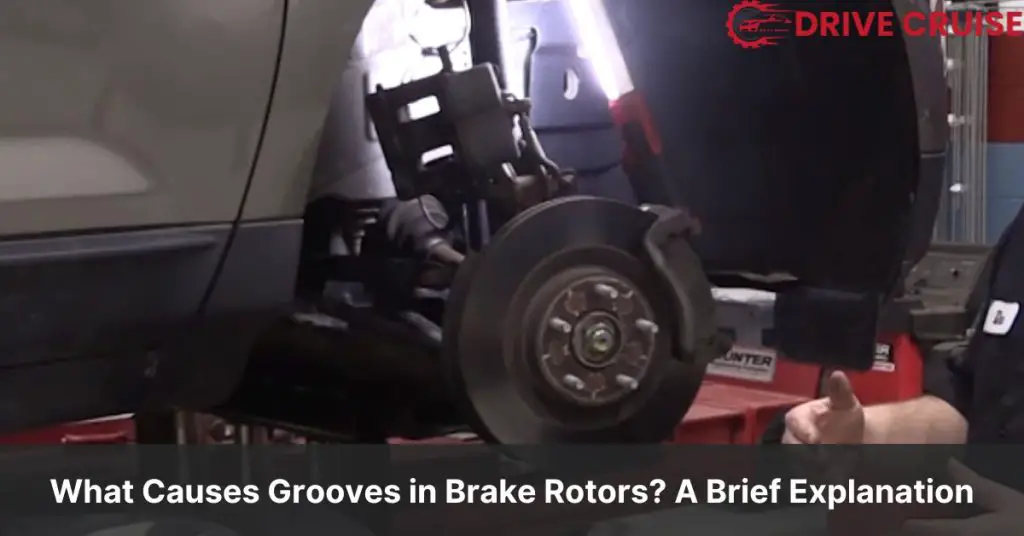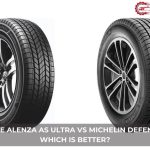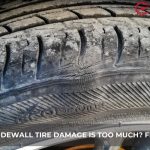We’ve all been there—driving along, feeling the rhythm of the road, when suddenly, our car starts making that dreaded grinding noise every time we hit the brakes. It’s a sound that can make any driver’s heart skip a beat. But what exactly causes those pesky grooves in brake rotors that lead to such an unsettling soundtrack?
Let’s dive into the heart of our vehicles’ braking systems to uncover the mystery behind those grooves. It’s not just about the noise; understanding this common issue can help us keep our rides safe and sound. So, buckle up as we explore the causes behind grooved brake rotors and why it’s a topic every driver should be clued in on.
Understanding Brake Rotors and Their Function
Brake rotors play a crucial role in a vehicle’s braking system, converting kinetic energy into thermal energy through friction. When a driver presses the brake pedal, brake pads clamp onto the rotors, creating friction that slows down the wheel’s rotation. This system relies heavily on the integrity of the brake rotors, as they absorb and dissipate heat generated during braking.
Constructed typically from cast iron or composite materials like reinforced carbon or ceramic matrix composites, brake rotors must withstand high temperatures and pressure. The design of brake rotors varies depending on the vehicle’s specifications, with most rotors being either drilled or slotted for better heat dissipation. These variations allow for more surface area, which in turn aids in cooling the rotor faster and provides a cleaner surface for the brake pads to interact with.
Over time, brake rotors experience wear and tear, leading to issues such as grooving. Grooves in brake rotors can occur when particles from the brake pads or external debris get embedded into the rotor surface or when the brake pads wear down unevenly, causing direct metal-to-metal contact. This wear not only compromises the brake system’s efficiency but can also lead to safety concerns if not addressed promptly.
Understanding the importance of brake rotors and their function underscores the need to maintain them properly. Regular inspections can identify issues like grooving early on, allowing for corrective measures before they evolve into more serious problems. Keeping brake rotors in good condition ensures the effectiveness of the braking system, providing peace of mind and safety for all road users.
Common Causes of Grooves in Brake Rotors
Following our discussion on the pivotal role of brake rotors in a vehicle’s braking system and their susceptibility to grooving, let’s dive into the common causes behind these grooves. Understanding these factors is crucial for maintaining the integrity and effectiveness of the braking system.
- Wear and Tear from Regular Use: Over time, brake rotors wear down from the constant friction generated during braking. This wear can lead to the formation of grooves, especially if the brake pads are not replaced when they become too thin. Regular use subjects the rotors to intense heat and pressure, gradually eroding the surface.
- Abrasive Debris: Small particles of dirt, sand, and other debris can become lodged between the brake pad and the rotor. As the brakes are applied, these abrasive materials can scratch and groove the rotor surface. Frequent driving on dirty or sandy roads increases the accumulation of abrasive particles, exacerbating the wear.
- Corrosion and Rust: Exposure to moisture and road salt can cause brake rotors to corrode. Over time, rust forms and eats away at the rotor surface, creating irregularities and grooves. Vehicles in moist climates or those exposed to road salt during winter are more prone to this issue.
- Hard or Defective Brake Pads: Using brake pads that are too hard or of lower quality can accelerate rotor wear. Some brake pads have metal chunks that can gouge the rotor surface. Similarly, defective pads may not wear evenly, applying uneven pressure on the rotors and leading to grooving.
- Improper Installation: Incorrectly installed brake components can lead to uneven wear and grooving. If the brake pads or rotors are not aligned properly, it can cause uneven distribution of pressure during braking, leading to the formation of grooves on one portion of the rotor.
Identifying these causes early on during routine inspections helps ensure that any issues with grooves in brake rotors are addressed promptly. This is essential for maintaining the safety and efficiency of the vehicle’s braking system.
Symptoms of Grooved Brake Rotors
Identifying the symptoms of grooved brake rotors plays a key role in maintaining the safety and effectiveness of a vehicle’s braking system. Following our discussion on the causes of rotor grooving, it’s essential to recognize the signs that may indicate your brake rotors need attention. Here, we dive into the most common symptoms that suggest the presence of grooves in brake rotors.
- Vibrations During Braking: One of the most noticeable signs is a vibrating or pulsating sensation felt through the brake pedal when applying the brakes. This occurs because the grooves cause uneven contact between the brake pads and the rotor, leading to inconsistent braking force.
- Noisy Brakes: Grooved rotors often cause unusual sounds when the brakes are applied. These sounds can vary from a slight squealing to a pronounced grinding noise, indicating the brake pads are making uneven contact with the rotors.
- Reduced Braking Performance: If you notice that your vehicle takes longer distances to stop or the braking feels less responsive, grooved rotors could be the culprit. The decreased surface area for the brake pads to grab onto due to the grooves can reduce the effectiveness of your brakes.
- Visible Grooves on Rotor Surface: During a visual inspection, if you see distinct lines or grooves on the surface of the brake rotor, this is a direct indication of wear. Regular checks play a crucial part in identifying this symptom early on.
Recognizing these symptoms promptly allows us to address the issue before it leads to more significant problems or safety concerns. Ensuring your vehicle’s brake rotors are in good condition is vital for maintaining optimal braking performance and safety on the road.
The Impact of Grooved Brake Rotors on Vehicle Performance
Understanding the impact of grooved brake rotors on vehicle performance extends naturally from recognizing symptoms of rotor issues. Grooved rotors can significantly affect a vehicle’s safety and driving experience. Here, we’ll explore how these grooves alter brake system efficiency and overall vehicle dynamics.
- Reduced Braking Efficiency: Primarily, grooves in the brake rotors diminish the contact area between the rotor and the brake pads. This reduction in contact area compromises the friction needed for effective braking, leading to longer stopping distances. When braking distance increases, the risk of accidents rises, especially in emergency situations.
- Increased Wear on Brake Components: Grooves on rotors cause uneven wear on brake pads, which can lead to the premature failure of these components. The uneven surface requires brake pads to work harder to achieve the desired braking effect, accelerating their wear and necessitating more frequent replacements.
- Vibration and Noise: Drivers often experience vibration through the steering wheel or brake pedal when the brake rotors are grooved. This vibration is a result of the uneven surface of the rotors, causing pulsations that are felt when braking. Noise is another byproduct of grooved rotors, with the inconsistencies in the rotor surface leading to squeaking or grinding sounds during brake application.
- Impaired Heat Dissipation: Brake rotors are designed to dissipate the heat generated from the friction of braking. Grooves interfere with this process, trapping heat and potentially leading to overheating. Excessive heat can cause the brake fluid to boil, resulting in a soft brake pedal feel and reduced braking capability.
- Potential for Rotor Warping: Over time, the combination of reduced heat dissipation and uneven contact with brake pads can cause the rotor to warp. A warped rotor leads to uneven braking and further vibration, compromising the vehicle’s stability during braking maneuvers.
By addressing grooved brake rotors promptly, we help ensure optimal braking performance and maintain vehicle safety. Regular inspections and maintenance play a crucial role in identifying wear-related issues before they lead to more significant impacts on vehicle performance and safety.
Preventing Grooves in Brake Rotors
Understanding the impact of grooved brake rotors on vehicle performance and safety, we’re keen to share how to prevent these grooves from forming in the first place. Prevention focuses on regular maintenance and mindful driving habits.
Regular Inspection and Maintenance
- Schedule Regular Brake Checks: Ensuring your vehicle undergoes routine brake system inspections is crucial. This allows professionals to catch early signs of wear, including minor grooves, before they become significant issues.
- Clean Brake Components: Regular cleaning helps remove debris and dust that can accumulate and cause abrasive wear to the rotor’s surface.
- Replace Brake Pads When Necessary: Worn brake pads can expose the rotors to metal-on-metal contact, leading to grooves. Replacing brake pads at the recommended intervals, or at signs of significant wear, is vital.
Mindful Driving Habits
- Avoid Hard Braking: Sudden stops can increase the pressure and heat between the brake pads and rotors, accelerating wear. Practice gradual braking when possible.
- Lighten Your Load: Excessive weight puts additional strain on your braking system, increasing wear. Removing unnecessary heavy items from your vehicle can reduce this strain.
- Select Quality Brake Pads and Rotors: Opting for high-quality brake components that match your vehicle’s specifications and your driving style can significantly reduce the risk of grooving. Some materials and designs offer better heat dissipation and are less prone to grooving.
- Consider Environmental Factors: If you frequently drive in harsh conditions, such as muddy or sandy environments, choosing brake components designed for these conditions can help minimize abrasive wear.
By incorporating these practices into our vehicle care routine, we can effectively prevent grooves in brake rotors, ensuring our brakes remain effective and our vehicle safe to drive. Keeping an eye on brake health, adopting gentler driving habits, and choosing the right components for our specific needs are all steps in the right direction towards maintaining optimal braking performance.
Conclusion
We’ve explored the critical role brake rotors play in our vehicle’s safety and performance. By understanding the causes of grooves and their impact, we’re better equipped to take preventive steps. Regular maintenance, mindful driving habits, and choosing quality components are key to keeping our brakes in top condition. Let’s commit to these practices, ensuring our journeys are not just smooth but safe. Together, we can make a significant difference in our driving experience and prolong the life of our brake rotors. Safe driving starts with us.
Related Posts:
- AC Only Works When Driving: Common Causes and Solutions
- Can You Get a Flat Tire from Hitting a Curb? Exploring the Possibility
- Car Shaking After Getting New Tires: Possible Causes and Solutions
- What Causes Grooves in Brake Rotors? A Brief Explanation
- How Far Can You Go on 0 Miles to Empty? Tips for Stretching Your Fuel Tank
- How Long Will a Whining Differential Last? A Friendly Guide to the Lifespan of Your Car’s Differential
- Mini Cooper Warning Symbols: What They Mean and How to Respond
- Rear Light Failure Warning Light: What You Need to Know
- Side Mirror Turn Signal Not Working: Common Causes and Solutions
- Smelling Antifreeze But No Leaks: What Could Be the Cause?
- Stop Start Not Ready Battery Charging Must Read: Tips for Keeping Your Car Battery Healthy and Charged















